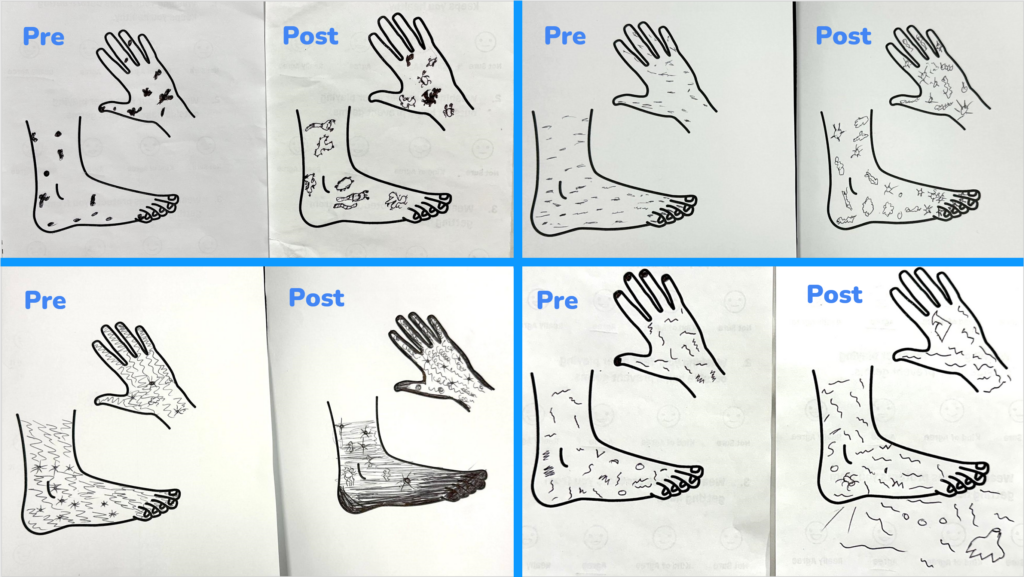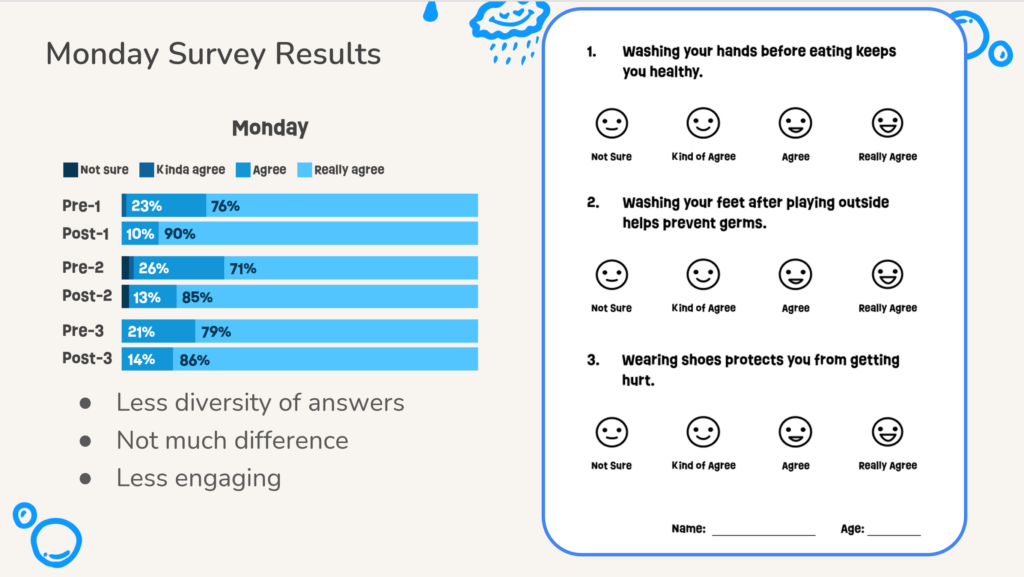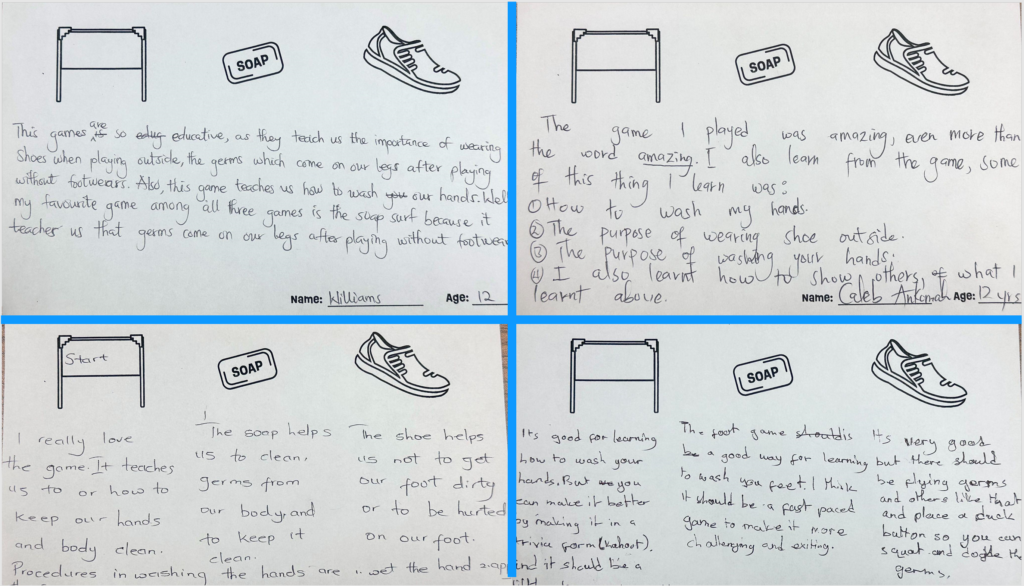Soft Openings
The team returned from Ghana just in time to dive into Soft Openings. In the theme industry, this phase is referred to as a “soft opening.” In theater, it’s called “previews,” and in software development, it’s known as a “beta release.” No matter the terminology, the meaning is clear: the project feels ready for the world but is still undergoing final adjustments. Soft openings allow creators to identify and address any remaining issues by showcasing their work in its near-finished form.
During Soft Opening Week, faculty and interested staff scheduled walkarounds to visit teams, offering detailed feedback. Unlike quick check-ins, these longer sessions provided teams the opportunity to present their projects in-depth, fostering more comprehensive discussions and insights.
Playtest Walkthrough
The team kicked off Soft Opening Week by presenting the results of our Ghana playtests. We demonstrated the playtest process, starting with the worksheet used during the activity and walking faculty through the entire user experience. This approach helped them understand the game’s flow while highlighting the insights we gathered.
Key Takeaways: Hand & Foot Drawing Activity
- Increased Awareness of Germs: Students’ drawings reflected a greater awareness of the prevalence of germs.
- Specific Bacteria Visualizations: Many illustrations resembled models introduced during Mini2, showing deeper engagement with the material.
- Critical Areas Highlighted: Students identified fingers and toes as hotspots for germs, aligning with the game’s educational goals.
- Environmental Awareness: Some students incorporated shoes and hazardous elements in their drawings, inspired by Mini3.

Survey Insights
We also shared survey results from the Monday and Wednesday playtests. The data demonstrated the game’s ability to raise emotional investment and awareness around hygiene practices. The faculty commended our decision to adapt and refine survey questions between sessions, as it improved the quality of feedback.


Surprising Results from Co-Design Activities
The co-design activity exceeded expectations, showcasing the students’ creativity and engagement.
- Thoughtful Illustrations: Students drew objects inspired by the mini-games and crafted imaginative additions they wished to see in the game.
- Detailed Reflections: Some students described their thoughts in writing, summarizing key takeaways from each mini-game. This reinforced that the game’s learning goals were resonating.
- Actionable Suggestions: Several students provided specific game design ideas, offering valuable feedback for future iterations.



Evaluating Impact
The pre- and post-activity comparisons revealed a measurable increase in awareness and knowledge about germs and protection. The differences in the students’ drawings underscored the game’s success in raising awareness.
Likert scale results further demonstrated a positive shift in students’ impressions and behaviors related to hygiene. This data solidifies that the project is achieving its intended impact.
Moving Forward
The insights gained from both playtests and co-design activities affirmed the game’s effectiveness. As we continue, these learnings will guide us in making the game even more impactful.
